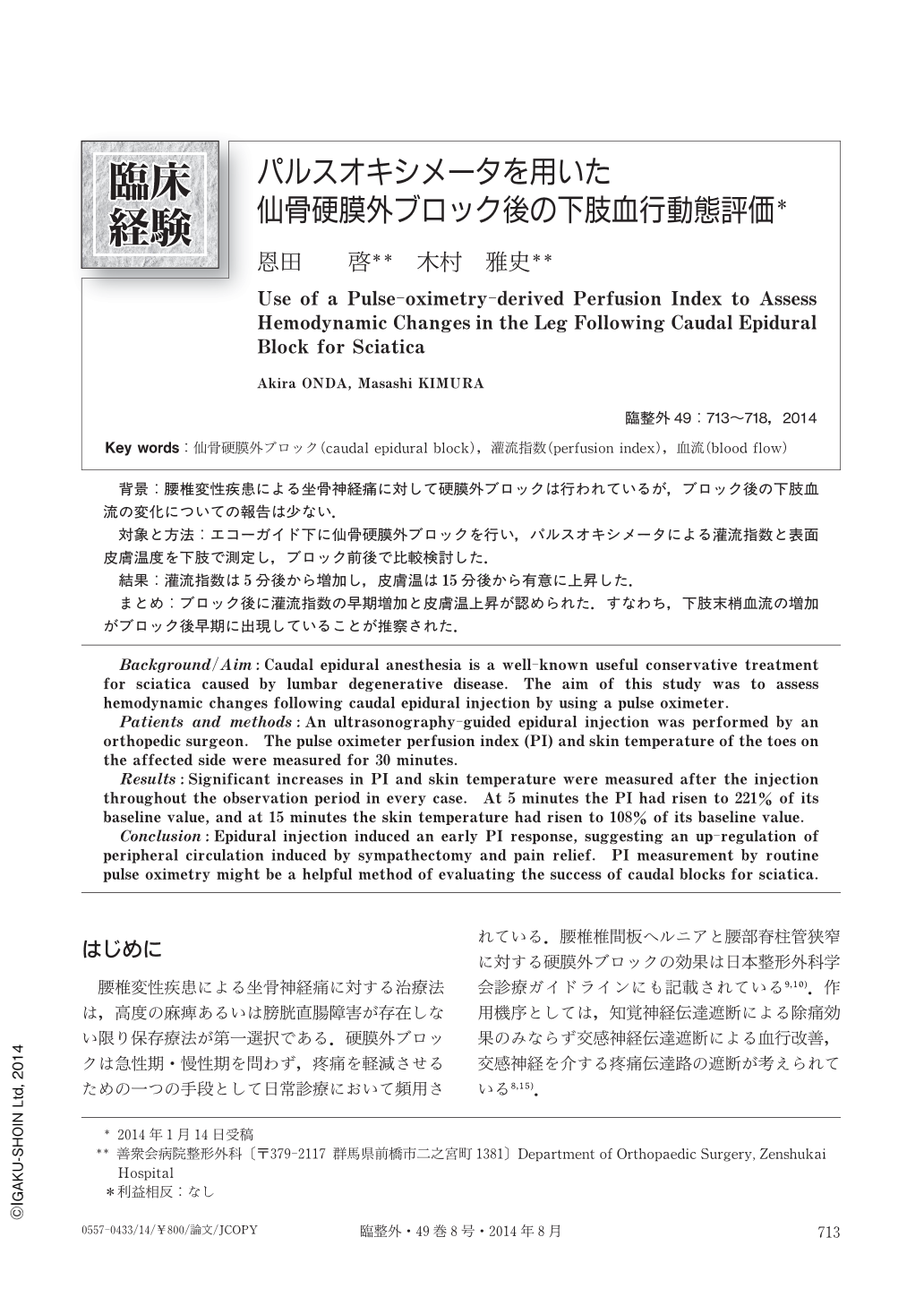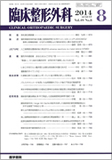Japanese
English
- 有料閲覧
- Abstract 文献概要
- 1ページ目 Look Inside
- 参考文献 Reference
背景:腰椎変性疾患による坐骨神経痛に対して硬膜外ブロックは行われているが,ブロック後の下肢血流の変化についての報告は少ない.
対象と方法:エコーガイド下に仙骨硬膜外ブロックを行い,パルスオキシメータによる灌流指数と表面皮膚温度を下肢で測定し,ブロック前後で比較検討した.
結果:灌流指数は5分後から増加し,皮膚温は15分後から有意に上昇した.
まとめ:ブロック後に灌流指数の早期増加と皮膚温上昇が認められた.すなわち,下肢末梢血流の増加がブロック後早期に出現していることが推察された.
Background/Aim:Caudal epidural anesthesia is a well-known useful conservative treatment for sciatica caused by lumbar degenerative disease. The aim of this study was to assess hemodynamic changes following caudal epidural injection by using a pulse oximeter.
Patients and methods:An ultrasonography-guided epidural injection was performed by an orthopedic surgeon. The pulse oximeter perfusion index (PI) and skin temperature of the toes on the affected side were measured for 30 minutes.
Results:Significant increases in PI and skin temperature were measured after the injection throughout the observation period in every case. At 5 minutes the PI had risen to 221% of its baseline value, and at 15 minutes the skin temperature had risen to 108% of its baseline value.
Conclusion:Epidural injection induced an early PI response, suggesting an up-regulation of peripheral circulation induced by sympathectomy and pain relief. PI measurement by routine pulse oximetry might be a helpful method of evaluating the success of caudal blocks for sciatica.

Copyright © 2014, Igaku-Shoin Ltd. All rights reserved.


